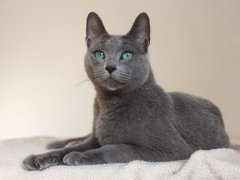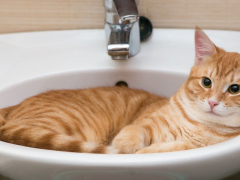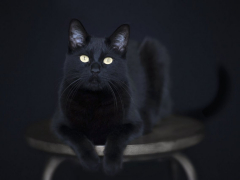
Mary Swift/Shutterstock.com
In the increasingly complex rainbow of cat colors and breeds – and often clever hybrid words for names – it’s no wonder that an offshoot of the tri-colored calico cat has emerged in feline lingo. This type of calico – cutely called a “tabico,” or sometimes “caliby” – combines the stripes of the tabby coat pattern with the orange and black colored patches of the calico coat pattern. What a cool, artistic cat!
In calicos, a cat has three colors: typically white, black, and orange, distributed in a patched pattern on the cat’s coat. In dilute calicos, the colors are muted with a pastel-like effect and appear more as gray and cream with white. On tabicos, the black and orange (or gray and cream) appear as striped tabby patches rather than solid colors.
The tabby pattern can show up in one or both colors. And the tabico cat, assuming the cat has a colored patch on the forehead rather than white, will have the characteristic tabby “M” in the area above and between the eyes.
What Are Some Interesting Facts About This Designer Calico Feline Known as the Tabico?

Hividah/Shutterstock.com
1. Tabicos Are Almost the Same Thing as Torbies
The tabico is a mixture of tabby and calico markings, which appear in mostly patches of color along with white. A torbie, on the other hand, is a mixture of tabby and tortoiseshell markings. The difference is that a tortie/torbie has little to no white, and the black and orange (or gray and white for dilutes) are mottled and swirled together. It’s the same basic genes, but they express themselves a little differently.
It’s the same for dilute tortoiseshells; they are the same as a dilute calico, but just have a different pattern. And both torbies and tabicos are specific types of torties and calicos.
2. Tabicos Are Almost Always Female
Even though tabicos have a complex color mix, the same calico/tortie almost-exclusively-female identity – some 99.7 percent of these cats, or 1 in 3,000 – applies. The determining factor is the presence of both black and orange on a cat, or gray and cream in a dilute.
Black and orange are the two basic shades of cat colors, and each comes on a different X chromosome. So if both colors appear on a cat, the cat has two X chromosomes, which is by definition a female.
However, once in a blue moon, a calico/tortoiseshell/tabico/tortie kitten will be a male, which has a bit of a unicorn status. These kittens have an extra X chromosome and are XXY, a genetic condition called Klinefelter’s syndrome. This extra chromosome can cause health issues, and the cat is usually sterile.

Mary Swift/Shutterstock.com
3. Tabicos Are Not a Breed
Like calico, tabby, tortoiseshell, and solid colors, tabico is a color pattern but not a specific breed. Calico and tabico fur can appear in many cat breeds. This coloring especially tends to show up in breeds including the Persian, the Japanese Bobtail, and the Maine Coon.
4. Some Cultures Consider the Tri-Colored Cat Good Luck
In many circles, the tri-color cat – calico and, by extension, tabico – is a sign of good luck. In Germany, calico cats are called “Gluckskatze,” which means “Lucky Cat.” Is there any truth to this lucky legend? Well, my mother and grandmother were from Germany, and I have two calicos, but I can’t say I’ve experienced any unusual luck and good fortune in my life the past two years. However, I would consider owning these cats to be lucky enough in and of itself.
In the United States, with the same sentiment, some people call calicos/tabicos “money cats.” (I will remind the universe of that when I buy my next Powerball ticket.) In Japan, tri-color cats were thought to bring magical powers and wealth, and sailors often took calicos with them to protect the ship against danger.
According to Irish folklore, rubbing a tri-color cat’s tail on a wart will cure the wart, but there’s a catch: It only works during the month of May. (You’re better off seeing a dermatologist for this one).
5. Tabicos Are Usually Both Sweet and Sassy
One point of controversy among cat fanciers is whether “tortitude” – the sassiness that seems to be part of the tortoiseshell’s purrsonality – also applies to calicos/tabicos. They do, after all, have the same color scheme and genes, with the colors just appearing in different patterns.
I can only speak on behalf of my two calicos, Pippi and Dolly, who fully live up to both the sweet and sassy side of their reputation. They are sweet and loyal and loving, but they can become feisty in an instant. That’s my girls! Other calico parents have said in social media threads that their calicos are spicy. So, I vote yes on the tortitude – or shall we call it calitude?







